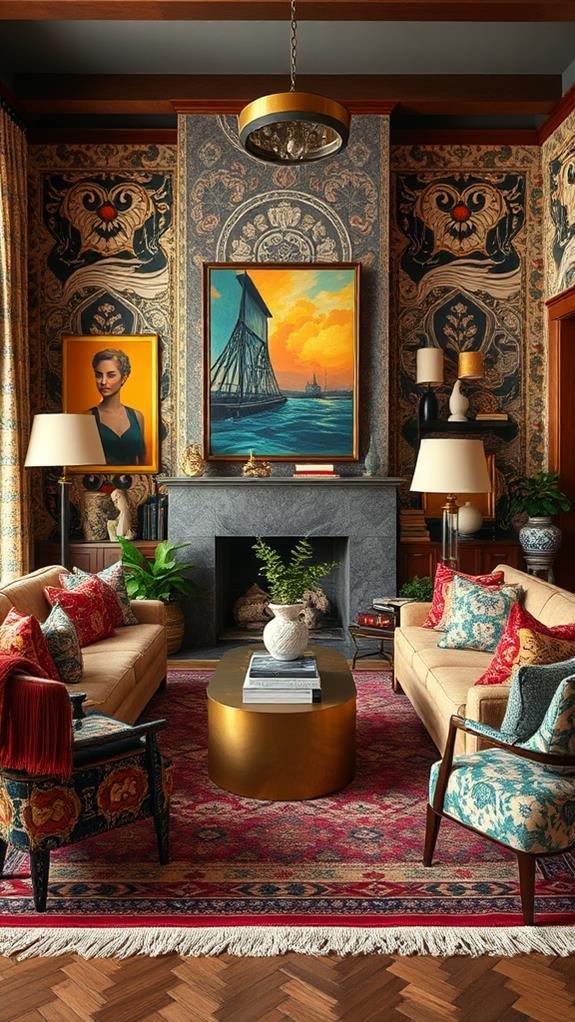What Defines Traditional Interior Design?
Traditional interior design is all about warmth, elegance, and timelessness. You’ll notice its roots in historical styles, combining classic furniture pieces like tufted sofas and sturdy wooden tables. Rich textures, such as silk and brocade, add comfort, while details like crown molding and wainscoting improve charm. The color palette often features deep reds, warm browns, and soft creams, creating inviting atmospheres. Furniture should be both stylish and comfortable, balancing functionality with elegance for everyday use. Overall, traditional design blends sophistication and practicality, making spaces feel welcoming. Stick around, and you’ll uncover even more about this fascinating style!
Key Takeaways
- Traditional interior design features warm, inviting color palettes with rich hues and high-quality materials like hardwood and luxurious fabrics.
- Classic furniture pieces include elegantly designed items like tufted sofas, wingback chairs, and sturdy wooden tables.
- Intricate architectural details such as crown molding, wainscoting, and rich textures contribute to a timeless and cozy atmosphere.
- A balanced arrangement prioritizes symmetry, creating cohesive decor that enhances both aesthetics and functionality.
- Decorative elements like ornate mirrors, tasteful paintings, and elegant curtains add character while maintaining a sense of elegance throughout the space.
Historical Influences on Traditional Design
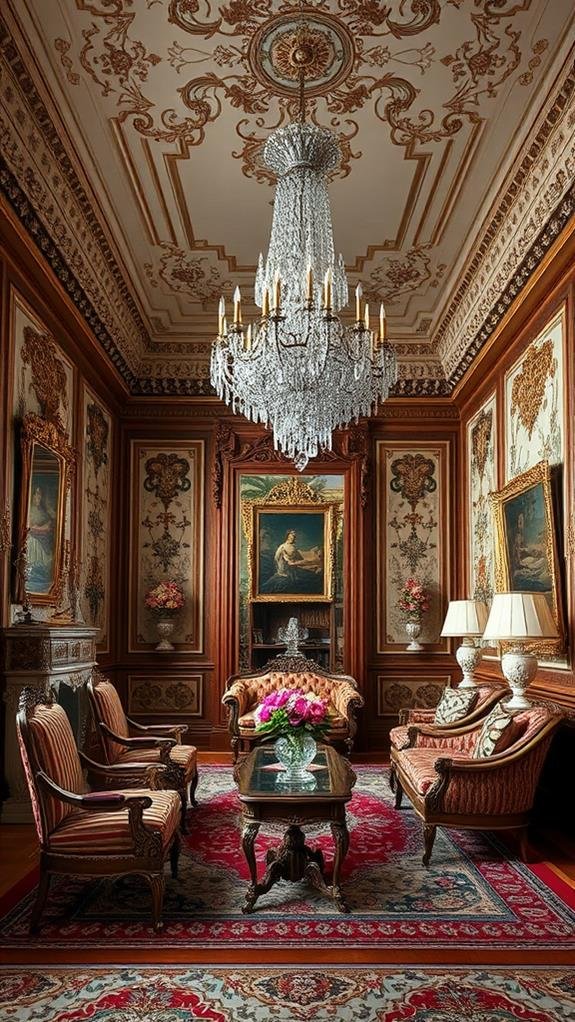
Throughout history, traditional interior design has been shaped by various cultural influences, reflecting the values and aesthetics of different eras.
You might notice that ancient Rome brought grandeur and large spaces, while the Middle Ages focused on sturdy, functional designs for comfort and security.
In the 18th century, European colonialism introduced exotic elements from afar, blending styles in unique ways. This era emphasized craftsmanship and detail, influencing furniture design and decoration.
As you investigate these influences, think about how they express the people’s lifestyles, preferences, and beliefs.
Key Characteristics of Traditional Spaces
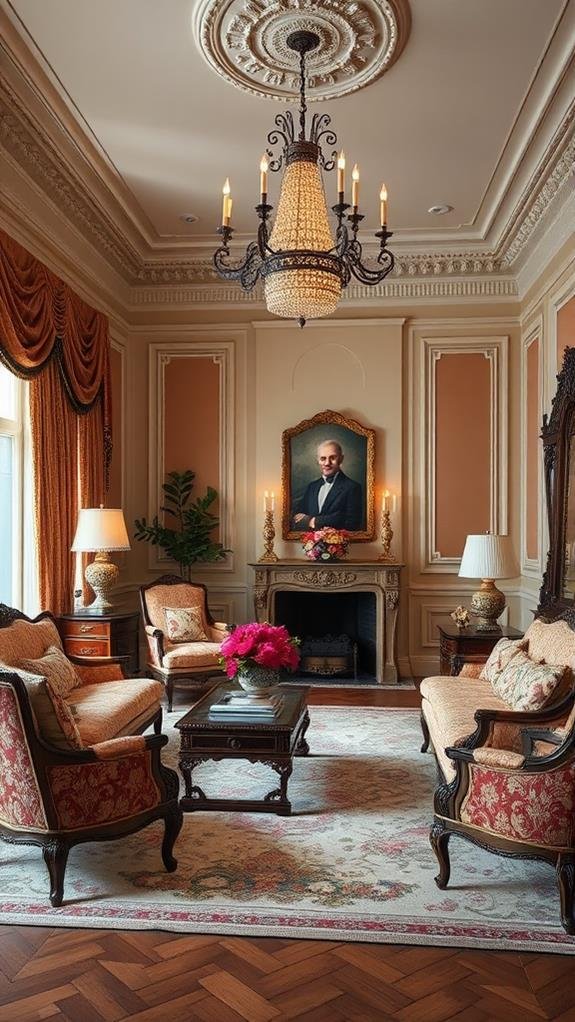
Traditional spaces are often characterized by their warmth, elegance, and a sense of timelessness.
You’ll likely notice classic furniture pieces, like tufted sofas and sturdy wooden tables, that invite comfort and conversation. Rich textures and intricate patterns, found in fabrics such as silk and brocade, help to create a cozy feel.
Don’t forget about details like crown molding and wainscoting, which add architectural interest and charm to each room. These spaces also incorporate balance and symmetry, where you can find matching pairs of lamps or artwork flanking a fireplace.
Overall, traditional design values craftsmanship and heritage, making it perfect for creating an inviting atmosphere that feels both stylish and enduring.
Embracing these key characteristics will help you achieve a beautiful traditional space.
Color Palette and Materials
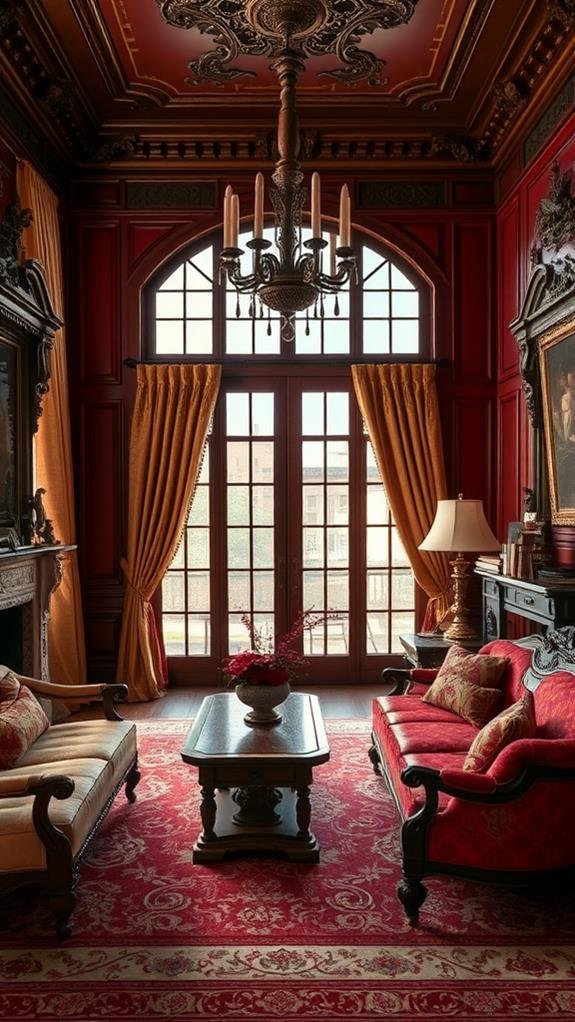
Warm hues and rich materials play a significant role in defining the color palette of traditional interior design. You’ll often find colors like deep reds, warm browns, and soft creams in these spaces. These colors create a cozy, inviting atmosphere that feels timeless and elegant.
Complementing these hues are high-quality materials, such as hardwoods, lush fabrics, and stone. For instance, consider using silk or velvet for curtains and pillows, which add a touch of luxury.
Flooring usually consists of polished wood, while area rugs might feature intricate patterns. The combination of these colors and materials helps create a balanced and harmonious look, making your home feel welcoming while maintaining a classic style that never goes out of fashion.
Furniture and Decorative Elements
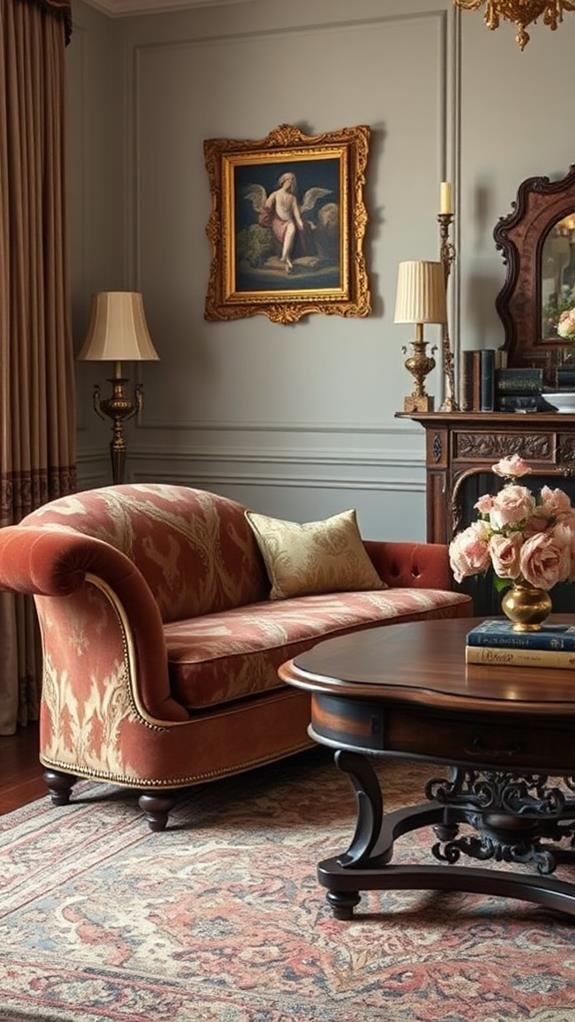
Choosing the right furniture and decorative elements is essential for achieving the classic elegance of traditional interior design.
Start with timeless pieces like a rich, wooden dining table or a sturdy, upholstered sofa. These items should convey warmth and sophistication. Consider adding wingback chairs or a chaise lounge for a touch of luxury.
Don’t forget about side tables and bookshelves, which can showcase decorative items.
In terms of decor, opt for ornate mirrors, tasteful paintings, and vintage-style lamps to improve the aesthetic. Accessories such as decorative pillows or elegant curtains help to create a cozy atmosphere.
Balancing Functionality and Elegance
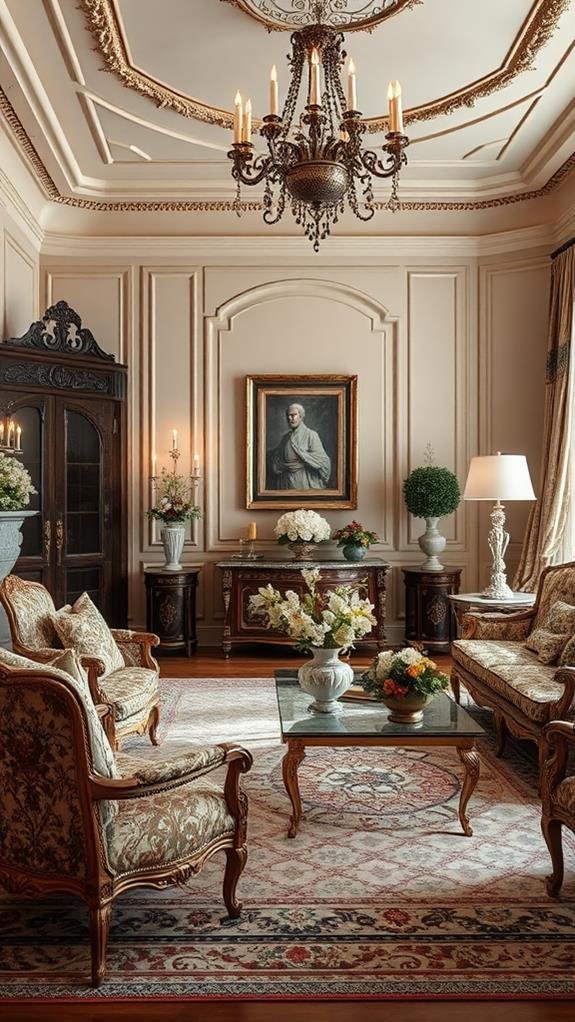
In the world of interior design, balancing functionality and elegance is essential for creating spaces that aren’t only beautiful but also livable.
You want your home to look stunning, but it should also meet your everyday needs. Start by choosing furniture that offers both style and comfort.
For example, pick an elegant sofa that’s soft enough for family movie nights.
Next, consider how you’ll use each room. Is it for entertaining, relaxing, or working? Make sure your layout supports those activities.
Finally, select decor that improves your space without cluttering it.
Remember, a well-designed room complements your lifestyle, making it inviting and practical.
Conclusion
To sum up, traditional interior design captures the charm of history while focusing on comfort and elegance. By using specific colors, quality materials, and classic furniture, you can create a cozy yet sophisticated space. Remember, it’s all about balancing beauty with everyday use. So, whether you’re redecorating a room or starting from scratch, keep these principles in mind to bring a timeless appeal into your home. Welcome the warmth and character that traditional design has to offer!


